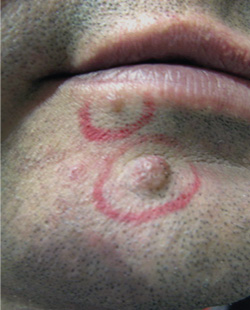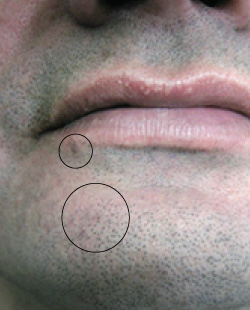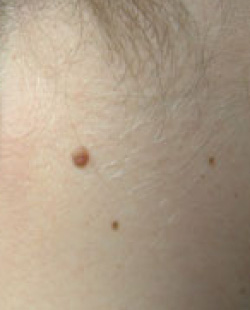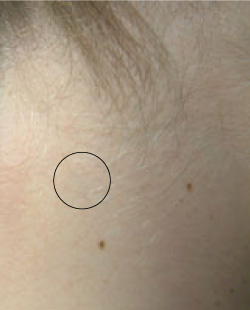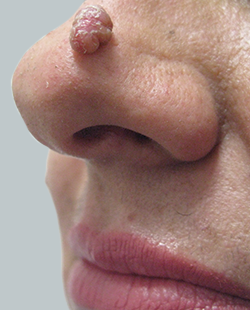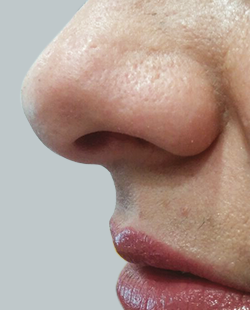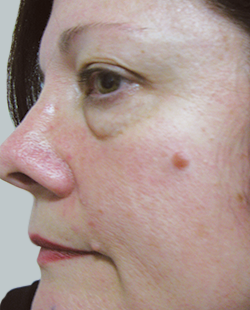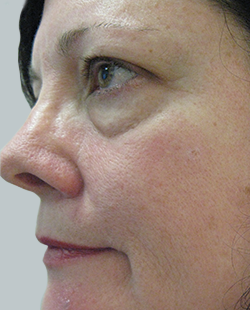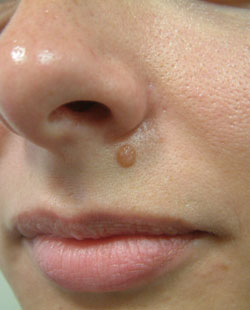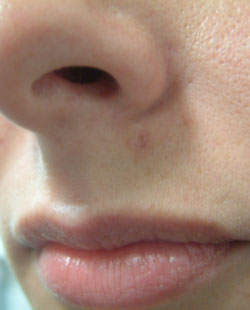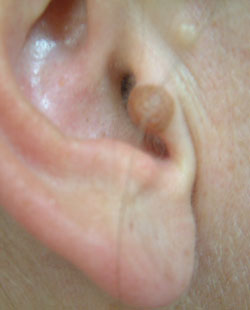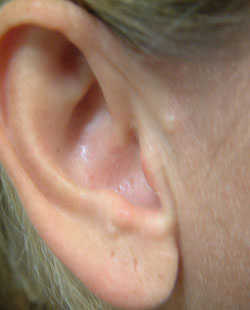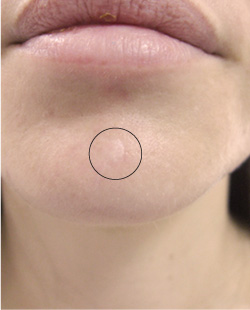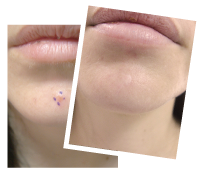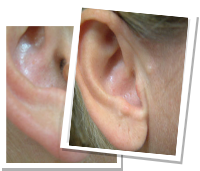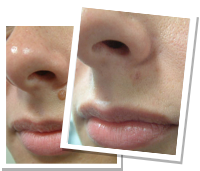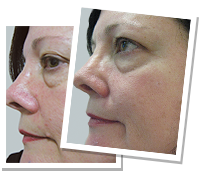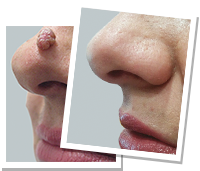What is a mole?
Moles (nevi) often appear as small, dark brown spots on the skin. They are caused by pigment-forming cells called melanocytes. Moles commonly appear during childhood and adolescence and may change in appearance or fade over time. Moles are generally harmless and rarely become cancerous, however, it is important to be aware of changes in your moles as a proactive step in detecting skin cancers such as melanoma.
Different types of moles
It is very common to have moles on your skin. Moles aren’t contagious and they usually don’t hurt, itch, or bleed. However, you should speak to your healthcare provider if you suspect a mole is abnormal. Types of moles include:
Common Nevi: This is a normal mole that is pink, tan, or brown and has a distinct edge.
Congenital Nevi: These moles are noticed at birth and occur in about one in 100 people. They may be more likely to progress as a melanoma or skin lesion than moles that appear after birth.
Dysplastic Nevi: These moles are larger and irregularly shaped. Dysplastic nevi tend to have uneven colour with dark brown centres and can develop as melanoma.
Preparing for a mole removal
Most moles don’t require treatment but you may wish to have a mole removed if you are unhappy with how it looks or feels. Talk with a practitioner at Me Clinic if you’re concerned about a mole. Moles are removed if your health provider suspects they might be cancerous or for cosmetic reasons.
Mole removal is generally a simple procedure lasting between a couple of minutes and an hour. Normally only local anaesthetic is required and the procedure usually involves cutting the mole out (excision). The procedure is relatively painless, however, there are a couple of things the patient can do to assist prior to mole removal.
- Eat and drink something before the appointment unless advised otherwise.
- Inform the practitioner of any medications you are currently taking.
- Consider the location of the mole and any inconvenience it may cause post-surgery.
- Speak to your treating doctor with any questions you may have regarding the procedure and expected outcomes.
What happens during mole removal
Before a mole removal procedure, your practitioner will inspect your skin and possibly take pictures of your moles to compare results at a later date. A piece of the mole may be removed (biopsy) if skin cancer is suspected. A dermoscope may be used to get a closer look at the mole and determine the best mole removal method.
Your Me Clinic practitioner will mark the areas on your skin to be removed. The area will then be cleaned and you will receive numbing medicine (anaesthetic). This anaesthetic might be applied on your skin (topically) or you may get an injection at the surgical site. Below are some treatment options.
Surgical excision
Excision is a common technique for cosmetic mole removal. With this method, the surgeon uses a scalpel to remove the mole. Depending on the type of mole, a margin of healthy skin may be removed to ensure that all atypical cells are removed. The mole is then lifted away using forceps. Bleeding is normal, and your surgeon may apply pressure or burn (cauterize) the mole removal area to stop the bleeding before stitches (sutures) are used.
Shave excision
With this method, the mole is shaved down rather than cut out. Although this method can provide great results it isn’t useful for deep tissue analysis for potential skin cancers. For shave excision mole removal, your surgeon uses a single or double-bladed razor to shave the growth to the level of the surrounding skin.
Electrosurgery (RF)
This radiofrequency procedure, also known as laser mole removal, is used to destroy abnormal skin growths such as moles, warts, scabs, and skin tags. A high-frequency electric current is passed through the skin using a hand-held device. Various voltages can be applied to achieve the desired results.
Mole removal aftercare
After removing your mole and then cauterizing or stitching the area, your Me Clinic practitioner will apply an ointment to the area to keep it moist and cover it with a bandage. You should keep the area clean and moist for a few days. Change the dressing daily or as instructed. After healing, be sure to avoid sun exposure and apply sunscreen to the area when outdoors. The mole removal procedure generally results in minimal scarring.
Recovery time
Healing time and the healing process will depend on your general health and the size of the mole removed. It should take around two to three weeks to heal but may take longer in some circumstances. During this time, you may experience a little soreness in the treated area but should be able to perform regular activities relatively comfortably. Follow your healthcare provider’s instructions to promote healing and prevent infection.
Keeping an eye on your skin
Most benign moles don’t need to be removed. However, you should check your moles regularly and note any suspicious moles or changes that occur. Contact your healthcare provider or a Me Clinic practitioner t if your mole:
- Is painful or itchy
- Has discharge or bleeds
- Grows or changes in shape
- Has irregular sides or edges
- Appear after you’re 30 years old
Costs of a mole removal
Although a relatively simple procedure, every patient is different and the mole removal surgery time and methods used can vary. For an accurate cost of mole removal, register with Me Clinic for an online initial consultation or contact us using the handy online contact form. Alternatively, speak to us over the phone or visit Me Clinic in person.
Discover real patient results
For more inspiration, check out real Me Clinic patient before and after results, mole removal case studies, and before & after Photos.

